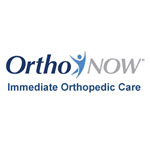As featured in:
Share on social media:
![]()
![]()
![]()
Access to affordable, quality healthcare is a major concern for everyone. Factors including; place of residence, income level, preexisting conditions, insurance coverage, age, corporate footprints, and provider reactions to supply and demand significantly influence an individual’s ability to gain entry to the world of medicine. Despite any future efforts to reform or repeal, the Affordable Health Care the bill has had a historic impact on both healthcare consumption and delivery methods. Further, the ACA was the catalyst for the emergence of the empowered patient. The importance of the empowered patient can neither be overlooked, nor undervalued, as their influence will impact other medical trends in 2017 and beyond.
The empowered patient evolved from technology, transparency and a lack of primary care providers needed to service the patient population. In a recent study, The Kaiser Family Foundation reported that we now have the highest number of American’s insured. However, the most popular plan choices were the second-lowest silver plan. This plan is the benchmark that is used to determine the amount of financial assistance individuals and families receive and the type and quality of care available. As a result, insurance companies experienced such significant losses under the ACA that many are opting to leave the marketplace in 2017 and the previously “uninsured” are now “underinsured”.
The high cost of care is the underlying reason for all recent disruptions and trends in medicine and will continue to be the underlying motivator according Justin Irizarry, the CFO and Co-Founder of OrthoNOW, the nation’s only orthopedic urgent care franchise. He believes that the empowered patient demands value over volume and this has caused a chain reaction throughout the system.
Irizarry, a Wharton MBA and financial industry expert, says the empowered patient demands better outcomes, at a lower cost delivered in a shorter cycle. He believes that the biggest trends in 2017 will include;
- A continued movement towards the retailization of healthcare,
- Continued development and integration of technology on both the consumer and provider side, and
- A more aggressive acceptance by insurance companies to integrate innovate, alternative and entrepreneurial medical practices into their payor mix
Irizarry explains that the “empowered patient expects healthcare to function in much the same way as their favorite retailers do. They expect access to on-demand, quality, care dispensed from centers located in high traffic commercial areas. They seek out urgent care centers as a means of negating the traditional primary care physician and patient relationship”. The consumer, he states, “is literally sick and tired of the time and money lost under the old method and are actively pursuing alternative channels”.
In 2016 the Urgent Care Association of America, UCAOA, released an infographic showing that 2,700 clinics and 27,000 medical and administrative professionals operate some form of urgent care centers in the United States and abroad. The CDC and NIH have estimated that urgent care visits represent a $42 billion industry and orthopedic care is valued at an additional $20 billion. NIH goes on to say that the average emergency room visit is 40% higher than the median US monthly rent payment, which is $871.
Hand and upper extremity surgeon and healthcare entrepreneur, Dr. Alejandro Badia, is the Co-Founder of OrthoNOW, and he says providers are also frustrated and looking to create innovate, cost effective alternatives to healthcare delivery and that mindset fits the critical needs of the empowered patient.
Dr. Badia too believes that technology will continue to be integrated into the system in 2017. He says that the expansion will come in numerous forms including:
- An increased use of on-line education platforms utilized to train future physician’s assistants and nurse practitioners to decrease the shortage of viable, highly-trained medical support professionals.
- An increased use in telemedicine which will help reduce time and money lost due to pre-and post-surgical procedures, providing quality care to underserved communities and meeting the demand of older patients who require more home healthcare.
- A surge in the development and activation of mobile apps for both routine and emergency situations.
OrthoNOW uses an app that includes a revolutionary feature called On My Way NOWTM . This allows the patient to find the nearest center, alert the staff they are coming, upload pictures of their injury and a description, and summon Uber to transport them to the awaiting specialist medical team should they be unable to transport themselves.
Irizarry and Badia believe that 2017 will see insurance companies changing their ideology and policies. Says Irizarry, “the insurance companies realize that they can no longer bleed out. They understand that they must change the way they view alternative care methods and technology in order to save money”.
Share on social media:
![]()
![]()
![]()










Leave a Reply